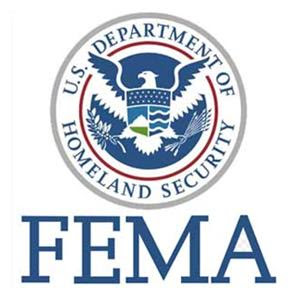FEMA: Questions and Answers to Assist Puna Residents
 FEMA has released this list of frequently asked questions and answers to assist Puna residents who have been affected by the eruptions and lava flows:
FEMA has released this list of frequently asked questions and answers to assist Puna residents who have been affected by the eruptions and lava flows:
Q: Who should apply for federal assistance?
Homeowners, renters, private nonprofits, and business owners in Hawai‘i County who sustained damage to their homes, vehicles, personal property, business or its inventory as a result of the Kīlauea volcanic eruptions and earthquakes may apply for federal assistance.
They can do so the following ways:
- At the Disaster Recovery Center (DRC) in the Kea‘au High School Gymnasium, 16-725 Kea‘au-Pāhoa Road
- Online at DisasterAssistance.gov
- By Phone (800) 621-3362 (FEMA). Multilingual operators are available
- Applicants who use 711 or Video Relay Service may also call (800) 621-3362. Persons who are deaf, hard of hearing or have a speech disability and use a TTY may call (800) 462-7585.
- The toll-free numbers are open from 7 a.m. to 11 p.m., seven days a week.
Disaster Recovery Centers are staffed with representatives from Hawai‘i County Civil Defense Agency, FEMA and the U.S. Small Business Administration. Survivors can meet one-to-one with specialists in disaster recovery.
Q: Why should I visit a DRC?
At a DRC, applicants can:
- Find answers to questions about the application process or get help making the initial registration;
- Check the status of an application, update personal contact information, or give insurance information to FEMA assistance specialists;
- Find out what to do if applications are found ineligible for FEMA assistance;
- Learn the information FEMA needs to process an individual’s claim;
- Speak to U.S. Small Business Administration customer service representatives about low-interest disaster loans for businesses, private nonprofits, homeowners and renters;
- Get help completing and submitting SBA disaster loan applications.
ADVERTISEMENT
ad_queue.push(“14||28||49”);
ad_queue.push(“14||28||50”);
ad_queue.push(“14||28||75”);
var mobile_text_ad_hide = function(){ if(jQuery(window).width() > 600) { jQuery(“.mobile_text_ads”).hide(); } }; jquery_queue.push(“mobile_text_ad_hide();”);
All centers are accessible and equipped with equipment to accommodate disaster survivors who have access and/or functional needs.
Q: What types of assistance are available?
Disaster assistance may include grants to help pay for temporary housing, emergency home repairs, destroyed home replacement, uninsured and underinsured personal property losses; medical, dental and funeral expenses caused by the disaster, and other serious disaster-related expenses, including childcare.
Q: I have registered for assistance. What happens next?
If your home or its contents are damaged or destroyed and you are uninsured or underinsured, a FEMA inspector may contact you within 10 days after you apply to schedule a time to meet with you to verify damages. All inspectors carry photo ID that shows they are affiliated with the U.S. government.
If your home was destroyed or is not accessible, FEMA will work with you to examine your home through historic GIS imagery in order to assess the damage.
About 10 days after the inspection FEMA will determine if you qualify for assistance. If you qualify, FEMA will send you a check by mail or deposit it in your bank account. FEMA will also send you a letter describing how you are to use the funds.
Other agencies may require additional verifications for their disaster assistance programs.
Q: What will FEMA accept as proof that I occupied my home?
FEMA accepts many documents as proof of occupancy, a utility bill, credit card bills or other first class mail sent to you and showing the damaged property as your address, a pay stub, or a current driver’s license.
FEMA is working closely with local agencies and officials to verify eligibility of nontraditional housing occupants.
Q: What do I do with the SBA loan application?
If you are contacted by the SBA regarding a disaster loan application, you should complete and return the application to be considered for a low-interest loan, as well as other types of federal assistance. These loans are the major source of recovery funding.
There is no obligation to accept a loan, if one is offered. If SBA finds that you do not qualify for a disaster loan, you may be referred back to FEMA for possible other assistance.
Q: Do I have to repay the money from FEMA?
FEMA assistance does not have to be repaid and is not taxable income. It has no effect on Social Security, Medicaid or other safety net programs.
Q: If I do not receive enough money to meet all my needs, what do I do?
Most disaster aid programs are intended to meet only essential needs and are not intended to cover all your losses. Some people may qualify for assistance from more than one program, so you may be eligible for additional help from another agency.
Q: Will FEMA pay for my food loss?
No. Food loss is not covered by the FEMA program. If you have an emergency need for a meal, contact your local Red Cross Chapter. Voluntary organizations at the DRC may be able to help you with food needs.
Q: Will FEMA help pay my utility bills?
No. FEMA is not authorized to make such payments. However, local charitable organizations may be able to help for a short period. We suggest you contact the Red Cross or your local United Way office for a referral to the appropriate agency in your location.
Q: I’m self-employed and out of work. Do I qualify for disaster unemployment assistance?
Disaster Unemployment Assistance, funded by FEMA and administered by the State Department of Labor and Industrial Relations, provides benefits for workers who would not normally qualify for unemployment compensation, including farmers, farm workers and those who are self-employed.






